Etanercept drug aliquots can be used for in vitro or in vivo experiments. Several other reference drugs and biosimilars are also available.
The drug aliquots are generated by aliquoting (dividing and repackaging) the EU-licensed biosimilar drug.
Etanercept drug aliquots can be used for in vitro or in vivo experiments. Several other reference drugs and biosimilars are also available.
The drug aliquots are generated by aliquoting (dividing and repackaging) the EU-licensed biosimilar drug.

Find and order your therapeutic molecules through smart filters

Up to 10 batches of original drugs for examining batch-to-batch variations

Up to 80% less compared to the original pharmaceutical price

Shipment within days worldwide according to GDP-standards

Up to 80% less compared to the original pharmaceutical price
| Drug name | Erelzi® |
| INN | Etanercept |
| API type | Etanercept is a human tumour necrosis factor receptor p75 Fc fusion protein produced by recombinant DNA technology in a Chinese hamster ovary (CHO) mammalian expression system. |
| Pharmacotherapeutic group | Immunosuppressants, tumour necrosis factor alpha (TNF-α) inhibitors |
| ATC code | L04AB01 |
| Target of antibody | TNF-receptor p75 Fc |
| General function | The active substance in Erelzi, etanercept, is a protein that has been designed to block the activity of a substance called tumour necrosis factor alpha (TNF). This substance is involved in causing inflammation and is found at high levels in patients with the diseases that Erelzi is used to treat. By blocking TNF, etanercept reduces the inflammation and other symptoms of the diseases. |
| Short description | Etanercept in combination with methotrexate is indicated for the treatment of moderate to severe active rheumatoid arthritis in adults when the response to disease-modifying antirheumatic drugs, including methotrexate (unless contraindicated), has been inadequate. Treatment of polyarthritis (rheumatoid factor positive or negative) and extended oligoarthritis in children and adolescents from the age of 2 years who have had an inadequate response to, or who have proved intolerant of, methotrexate. |
| Pharmacodynamic properties (Mechanism of action; Source EMA document) | Much of the joint pathology in rheumatoid arthritis and ankylosing spondylitis and skin pathology in plaque psoriasis is mediated by pro-inflammatory molecules that are linked in a network controlled by TNF. The mechanism of action of etanercept is thought to be its competitive inhibition of TNF binding to cell surface TNFR, preventing TNF-mediated cellular responses by rendering TNF biologically inactive. Etanercept may also modulate biologic responses controlled by additional downstream molecules (e.g., cytokines, adhesion molecules, or proteinases) that are induced or regulated by TNF. |
| Pharmacodynamic properties (Pharmacodynamic effects; Source EMA document) | Tumour necrosis factor (TNF) is a dominant cytokine in the inflammatory process of rheumatoid arthritis. Elevated levels of TNF are also found in the synovium and psoriatic plaques of patients with psoriatic arthritis and in serum and synovial tissue of patients with ankylosing spondylitis. In plaque psoriasis, infiltration by inflammatory cells, including T-cells, leads to increased TNF levels in psoriatic lesions compared with levels in uninvolved skin. Etanercept is a competitive inhibitor of TNF binding to its cell surface receptors, and thereby inhibits the biological activity of TNF. TNF and lymphotoxin are pro-inflammatory cytokines that bind to two distinct cell surface receptors: the 55-kilodalton (p55) and 75-kilodalton (p75) tumour necrosis factor receptors (TNFRs). Both TNFRs exist naturally in membrane-bound and soluble forms. Soluble TNFRs are thought to regulate TNF biological activity. TNF and lymphotoxin exist predominantly as homotrimers, with their biological activity dependent on cross-linking of cell surface TNFRs. Dimeric soluble receptors, such as etanercept, possess a higher affinity for TNF than monomeric receptors and are considerably more potent competitive inhibitors of TNF binding to its cellular receptors. In addition, use of an immunoglobulin Fc region as a fusion element in the construction of a dimeric receptor imparts a longer serum half-life. |
| Original license holder | Sandoz GmbH Biochemiestr. 10 A-6250 Kundl Austria |
| Marketing authorisation numbers | EU/1/17/1195/001-014 |
| Marketing authorisation holder | Sandoz GmbH Biochemiestr. 10 A-6250 Kundl Austria |
| Name of the manufacturer of the biological active substance | Sandoz GmbH Schaftenau Biochemiestrasse 10 A-6336 Langkampfen AUSTRIA Novartis Singapore Pharmaceutical Manufacturing Pte. Ltd. BioProduction Operations 8 Tuas Bay Lane Singapore 636986 |
| Name and address of the manufacturer(s) responsible for batch release | Sandoz GmbH Schaftenau Biochemiestrasse 10 A-6336 Langkampfen AUSTRIA |
| Max shelf life | 36 months |
| Storage conditions | 2°C – 8°C |
| List of excipients | Citric acid anhydrous Sodium citrate dihydrate Sodium chloride Sucrose L-Lysine hydrochloride Sodium hydroxide (for pH adjustment) Hydrochloric acid (for pH adjustment) Water for injections |
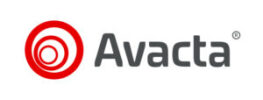

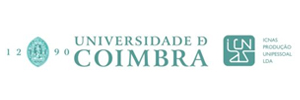
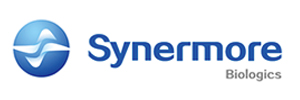

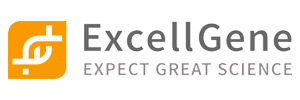

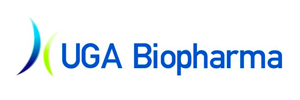
Evidentic offers multiple batches of original drug aliquots in low binding Eppendorf tubes for research use only. We provide licence-free drug aliquots with long, short or even “negative shelf life” by storing the products at recommended temperatures (either 2-8°C or -80°C) and ensuring fully functional molecules for research purposes.
Evidentic GmbH
Martin-Buber-Str. 10
14163 Berlin